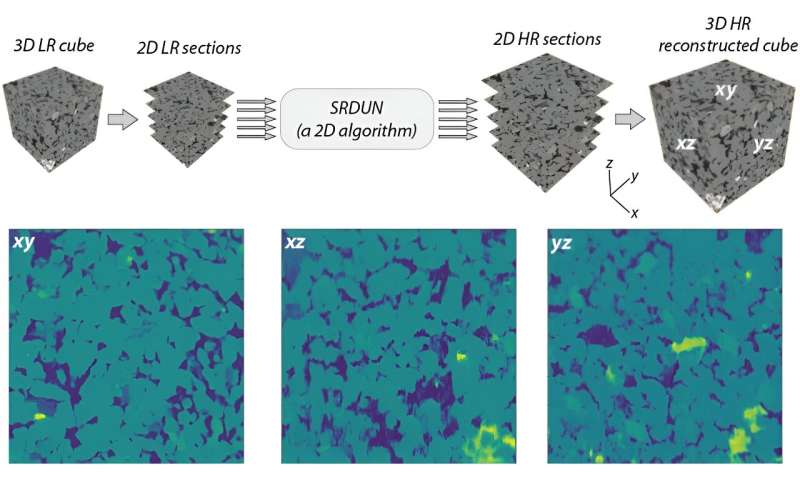Neural networks used to improve quality of digital rock images

A joint paper by KFU, University of Zanjan (Iran), and Bochum University of Applied Sciences appeared in Acta Geophysica.
The introduction of machine learning reduces the limitations arising from tomographic imaging of rock samples: it becomes possible to improve the detail of sufficiently large samples, which in the future may contribute to the direct validation of numerical modeling and experimental results.
Senior Research Associate (Laboratory of Enhanced Oil Recovery) Rail Kadyrov informs, "The result of tomography is a three-dimensional digital image, but for machine learning it is more efficient to use two-dimensional images. We can slice a three-dimensional volume into separate images, process them with a neural network, and reassemble them, but it turns out that the image quality along the slicing axis is extremely coarse. In our work, we propose two ways to solve this problem: averaging of three groups of images in different directions along the space axes and binary combination, which combines the results of structure extraction in each of the three directions of the space."
Working with a tomography scanner has several important features that necessitate innovative solutions. Machine learning can automate and improve the process of processing and analyzing the multitude of data obtained from scanning rock samples, as well as process large volumes of images and help create more accurate three-dimensional reservoir models, which is of great importance in geology and the oil and gas industry. All of this not only saves time, but also improves the accuracy and reliability of the results.
"Scientific novelty of the conducted research opens great prospects for specialists—we managed to create three-dimensional images and model rock characteristics using two-dimensional algorithms working with tomographic slices, meeting the current challenge in the field of digital rock physics," concludes Kadyrov.
The outcome of the study allows numerical calculations of the physical properties of the rock and determines how changing the scale of difference between images can affect the results, making a significant contribution to the understanding of this problem.
More information:
Applicability of 2D algorithms for 3D characterization in digital rocks physics: an example of a machine learning-based super resolution image generation
eng.kpfu.ru/novosti/nauka/neur … digital-rock-images/
Provided by Kazan Federal University